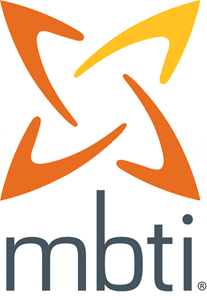Are you misusing the MBTI<sup>®</sup> questionnaire?
opp

By Professor Jim Maxon of Maxon Associates®
In 1976, as a postgraduate student at the University of London, I was introduced to various psychometric instruments, including the MBTI® questionnaire. I’ve been an advocate and user of the tool ever since – for longer than OPP has existed, in fact! However, the key to unlocking the benefits of the tool lies in understanding how and when to apply it. With some less able practitioners, this hasn’t always been the case.
The MBTI questionnaire is the world’s most popular psychometric instrument. If you Google MBTI you will be offered around 4.5 million websites. Such is the popularity of the instrument, and so widespread is its use, that it is unusual for no-one within a team or group to have heard of it. But this does not make it a panacea for all ills. Indeed, there are a few problems with the way the tool is applied and interpreted, despite the fact that 31,490 MBTI practitioners have qualified to use the questionnaire via OPP, and despite the excellent training OPP provides.
These are a few of the common misunderstandings that I’ve seen people making over the past few decades.
Some practitioners and line managers insist on type-casting people. For example, rather than saying someone seems to enjoy the world of people, places and activities, or appears to be very caring, they will say the person is an 'Extravert' or a 'Feeling type', and leave it at that, as if no further detail was required.
Categorising people as a particular type such as ENFP or ISTJ is useful as a starting point, but it is wrong to believe that these labels state everything there is to know about that individual. Type-casting people in this way may give a lay person the impression that the MBTI ‘type’ is about as insightful or useful as an astrological star sign.
Many people, notably line managers, believe there is something 'wrong' with their team if it is not composed of the 'ideal' mix of types. In my experience, there is no such thing as an 'ideal' team, nor should the MBTI instrument be used as a recruiting tool to identify someone with the 'ideal' type to plug a gap that will make the team 'perfect'.
This is a fundamental point – the MBTI tool is not validated for use in selection. OPP is clear that it should not be used in this way: it measures preferences, and does not relate to someone's ability to do a specific job. However, there are still people who call the MBTI instrument a 'test' rather than a psychometric instrument or questionnaire, and a 'test' implies a direct measurement of ability.
I have observed many dysfunctional teams and there is no doubt the MBTI questionnaire is ideal for use in diagnostic and developmental processes with them. However, identification of type is only the first step in the process of enhancing strengths, identifying weaknesses and agreeing actions to improve team functionality.
Finally, I hear both practitioners and line managers talk about 16 'boxes'. In my view, there are 16 'platforms' from which people move, not boxes that restrict or define how people behave. I don't want to appear overly critical, but we should be careful how we describe the MBTI questionnaire. Lets have platforms, not pigeon-holes!
Over the years I have used the MBTI questionnaire in various management and executive development programmes, including leadership, managing change, time management and developing personal effectiveness. Whilst I haven't used it in teaching per se, I find it extremely useful in identifying learning styles. I have also used the instrument in one-to-one contexts, usually as part of executive coaching with senior managers.
I have used the MBTI questionnaire in the UK, Europe and the Middle East. I tend to use Step I in groups, where a basic, general understanding of type is adequate, and Step II on a one-to-one basis or in teambuilding - I find the richness of feedback provided by the extensive reports is invaluable.
Wherever I use the MBTI instrument, there are two associated, thought-provoking concepts that I find invaluable: making constructive use of difference, and the notion that there is no such thing as reality, only an individual's perception of their own reality. Once a practitioner or delegate has digested these concepts, all notions of type-casting and simplification are blown away.
Jim Maxon has been using the MBTI questionnaire for over 30 years. From initially discovering the instrument as a student, he has since used it for a range of business applications at Maxon Associates.